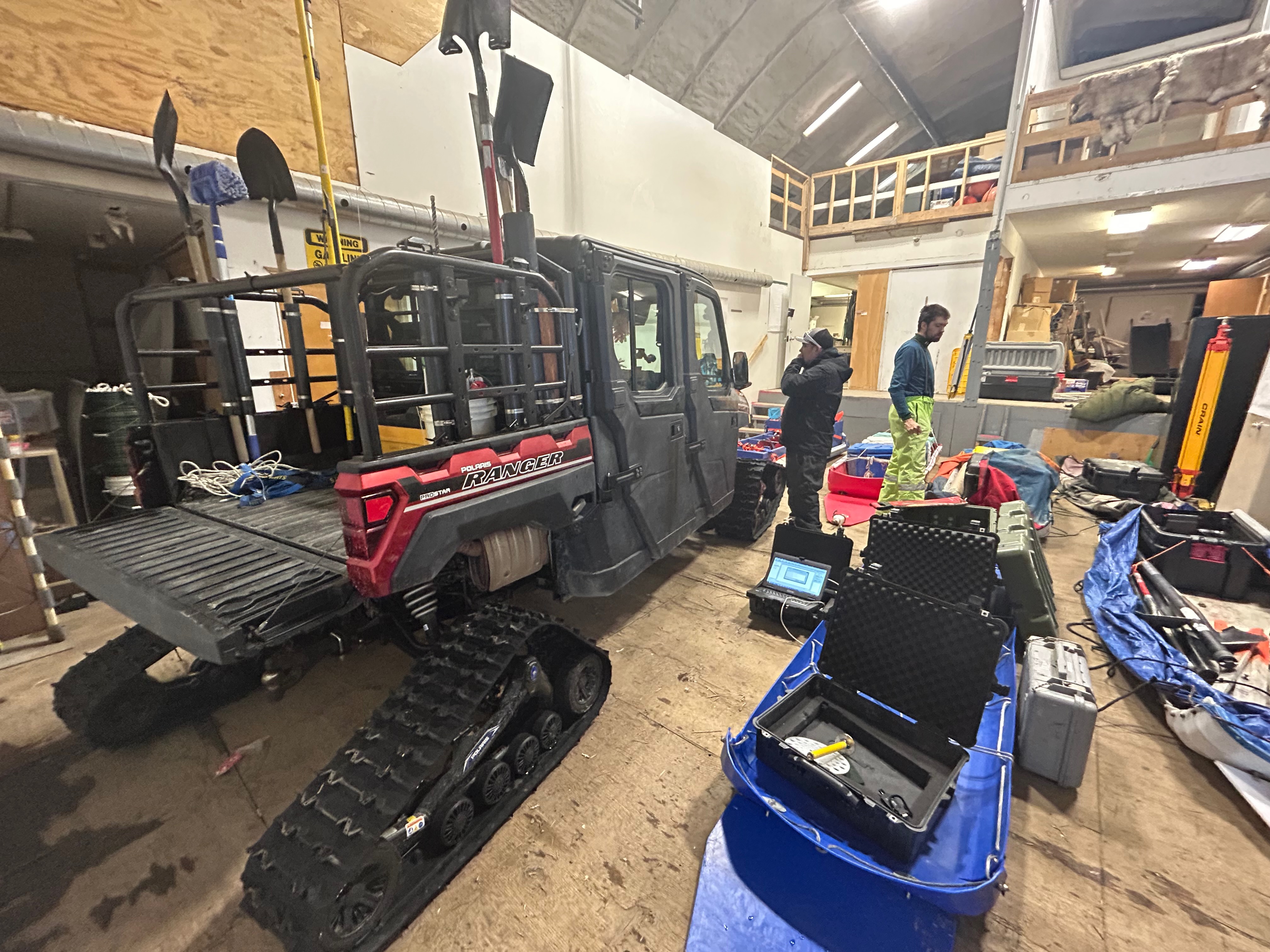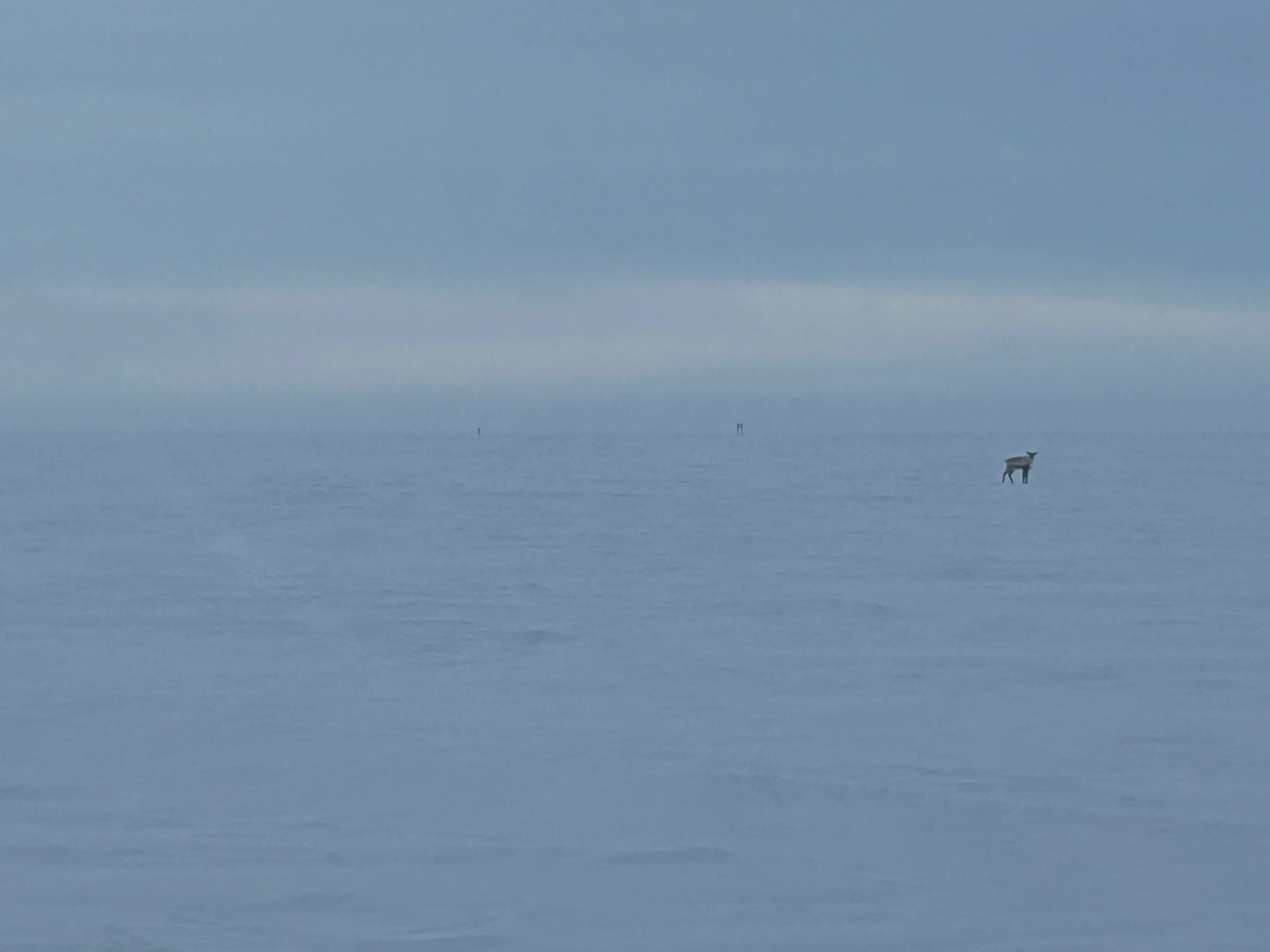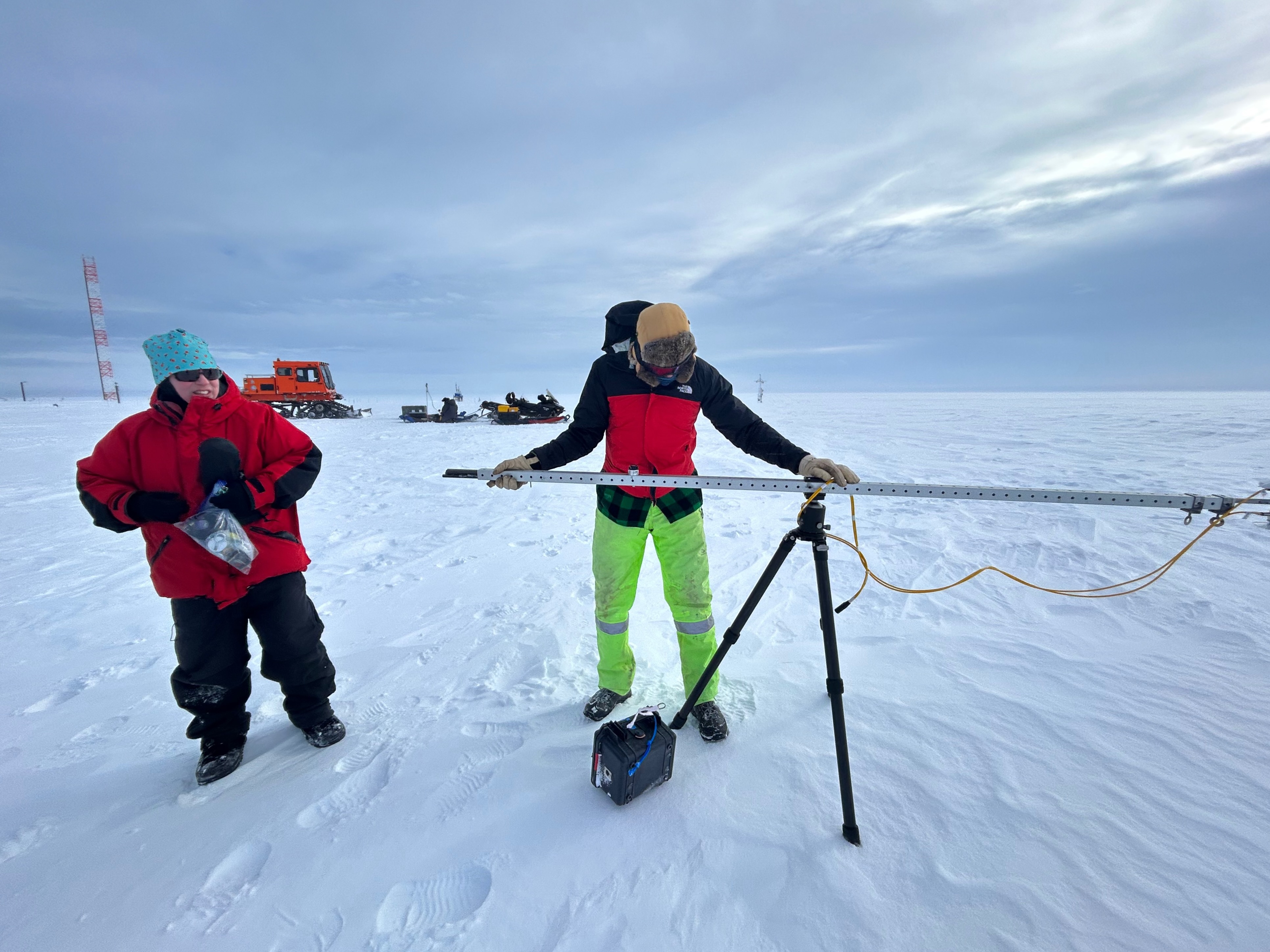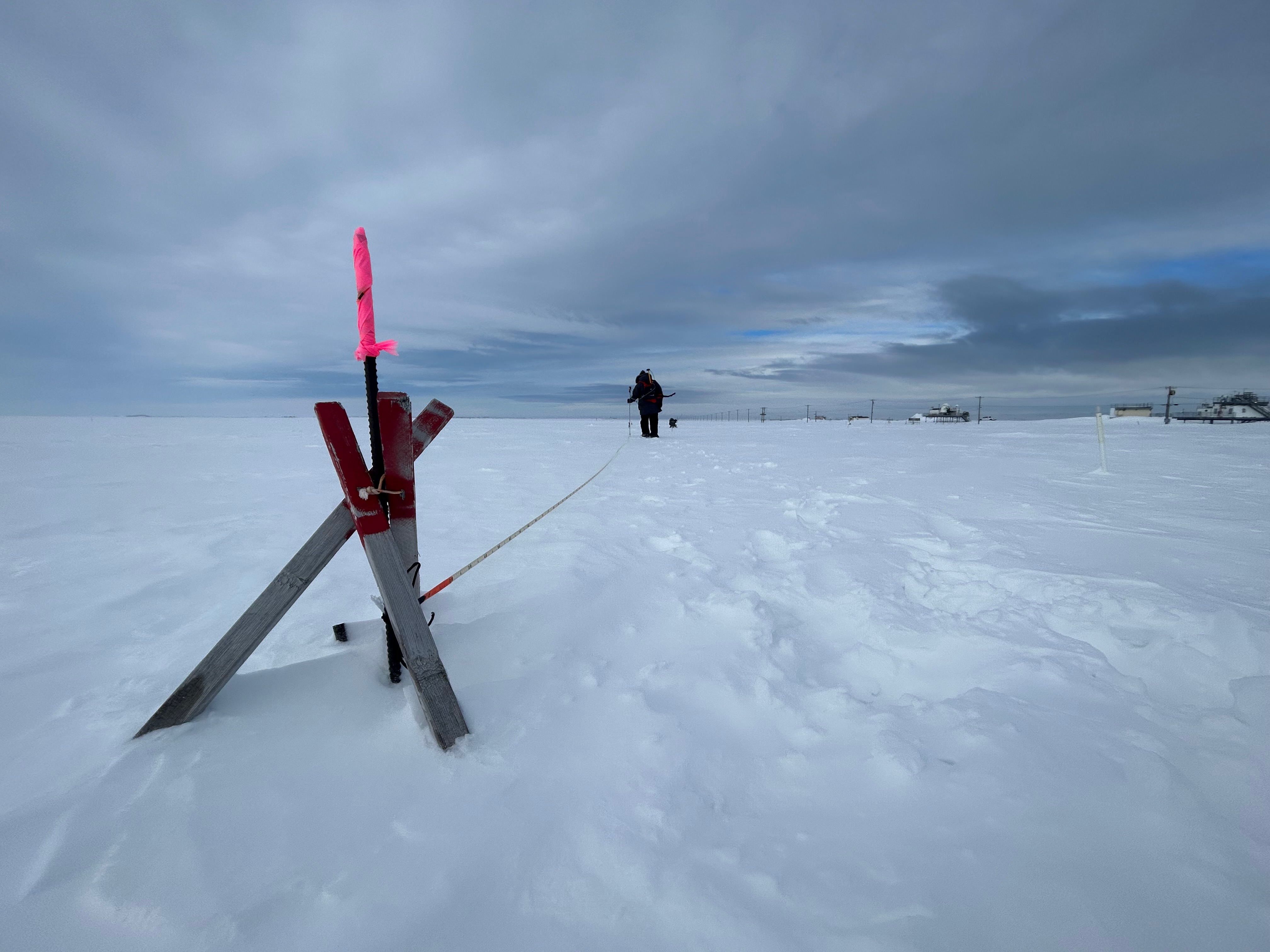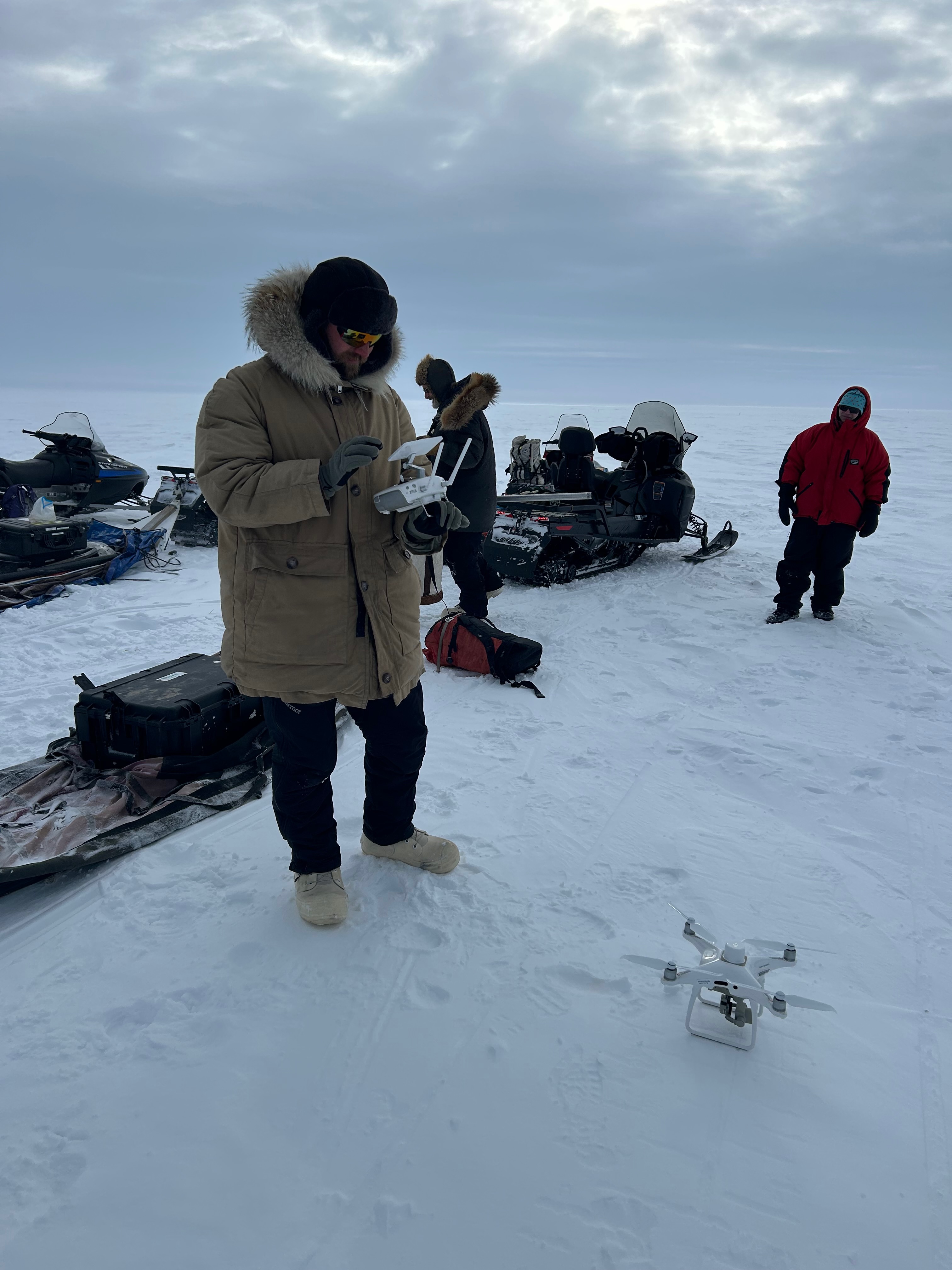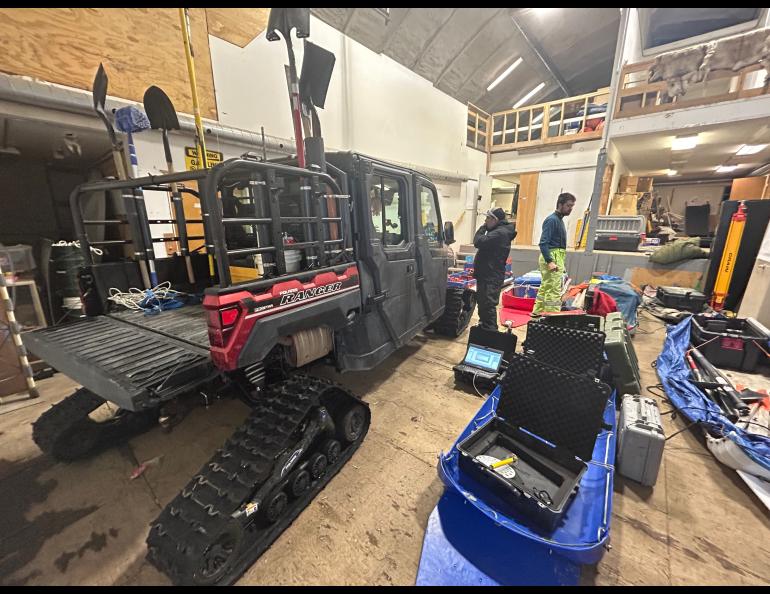
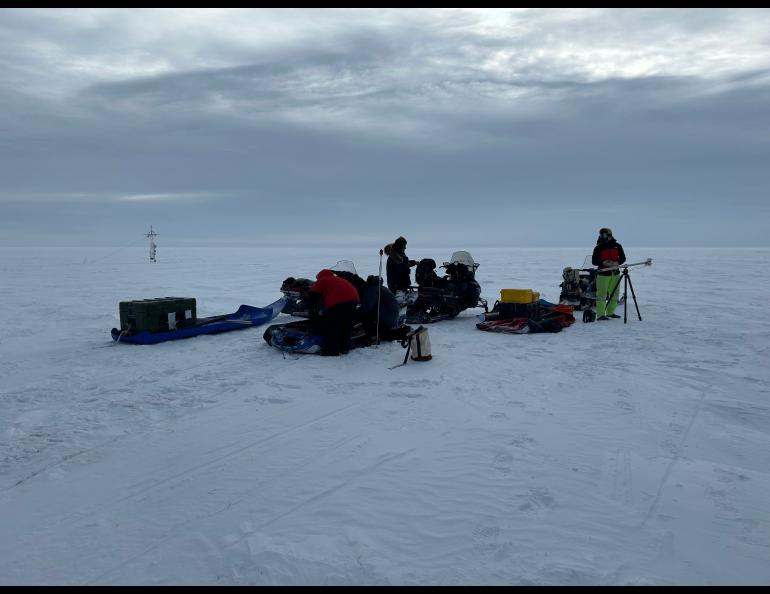

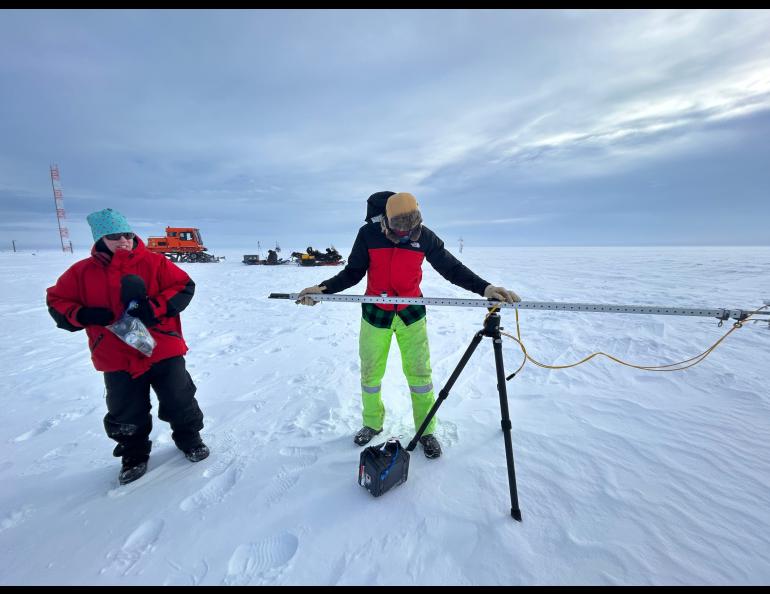
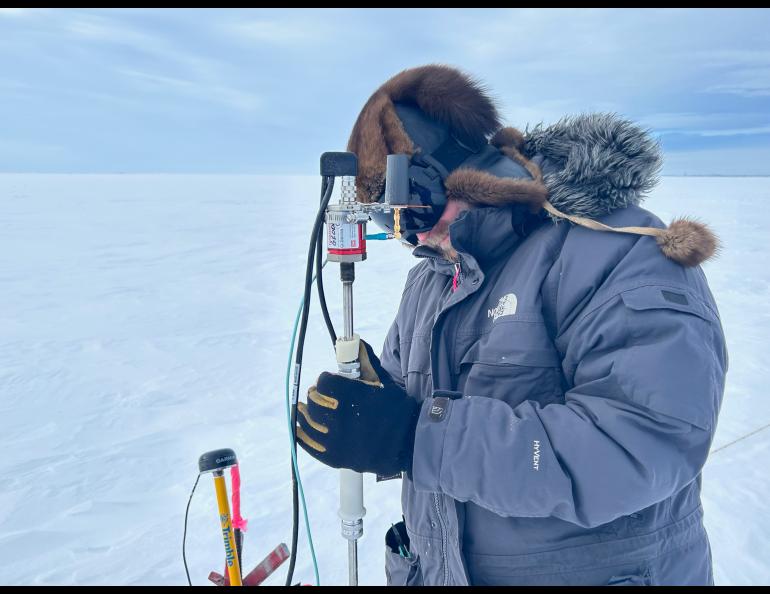
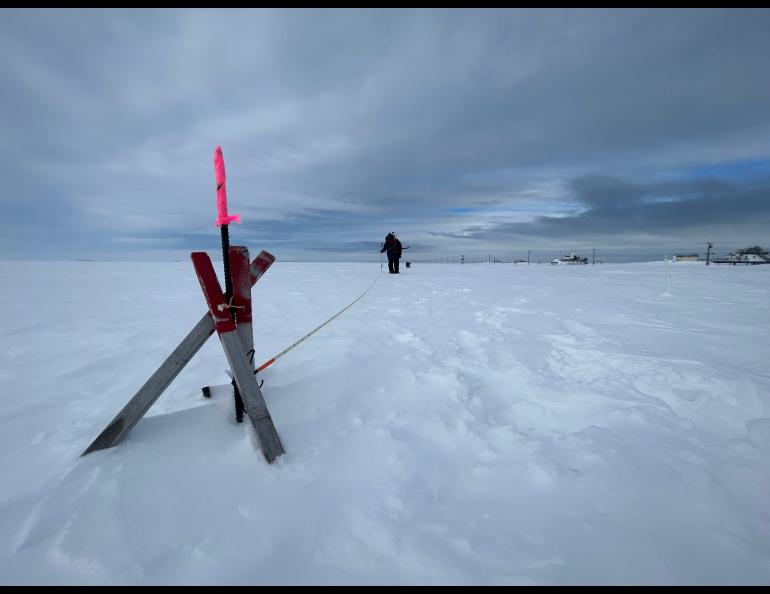
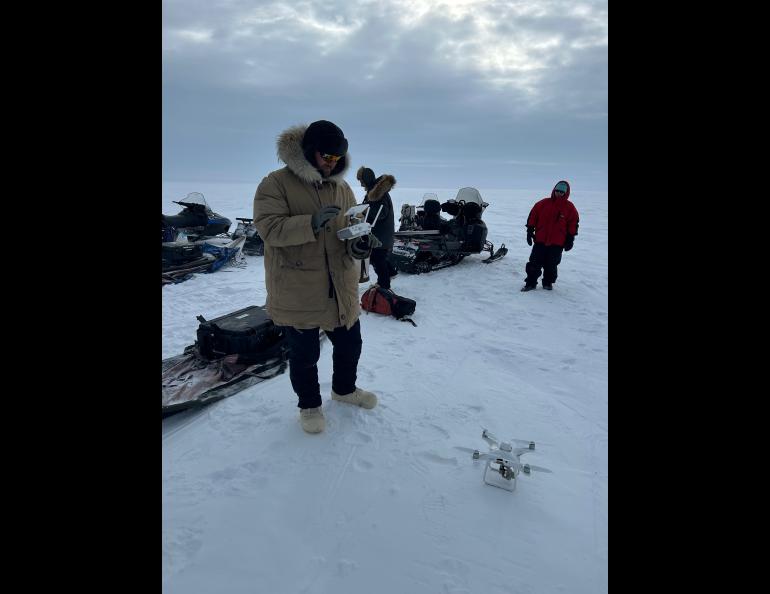
SALVO: Studying how snow melts on tundra and sea ice
The five University of Alaska Fairbanks researchers didn’t mind the constant wind that gusted to about 30 mph across the flat whiteness on Inupiaq land a little more than a mile southeast of Utqiagvik, Alaska’s northernmost city.
It was late morning Friday, April 19, with the temperature somewhere in the low 20 degrees Fahrenheit, several degrees warmer than what the National Weather Service says is normal for the area.
The windchill brought it to about 1 degree. Still not too bad for these Arctic science veterans.
It was just another day for the Snow Albedo Evolution in the Arctic team, also known as SALVO.
SALVO, in its third year of fieldwork, is sponsored by the U.S. Department of Energy's Atmospheric Sciences Research Program.
What is SALVO? Why were these researchers here?
“The purpose of our campaign is really to study the evolution of snow on tundra and snow on sea ice during the melt season,” said Research Associate Professor Jennifer Delamere of the UAF Geophysical Institute and the SALVO team’s field leader. “So we want to characterize the snow before it starts to melt.”
Snow and the climate have some important properties, Delamere said.
“One of them is the reflectivity of snow,” she said. “When you start to put sunlight into the system, how much of that is absorbed in the snowpack and how much is sent back to space?
“That balance of energy helps us understand more about how climate works, because you need an energy driver for a system,” she said. “And the sun is a big one here in the Arctic starting in mid-May.”
“When the snow melts and we're left with a dark surface, that has very different impacts on the behavior of the atmosphere and then, ultimately, the climate.”
The SALVO team on this day consisted of Delamere; Research Professor Matthew Sturm of the Geophysical Institute; postdoctoral fellow Marc Oggier of the UAF International Arctic Research Center; Phillip Wilson, research professional at the UAF Institute of Northern Engineering; and temporary UAF employee David Clemens-Sewall.
• Jennifer Delamere, University of Alaska Fairbanks Geophysical Institute, jsdelamere@alaska.edu
• Rod Boyce, University of Alaska Fairbanks Geophysical Institute, 907-474-7185, rcboyce@alaska.edu





